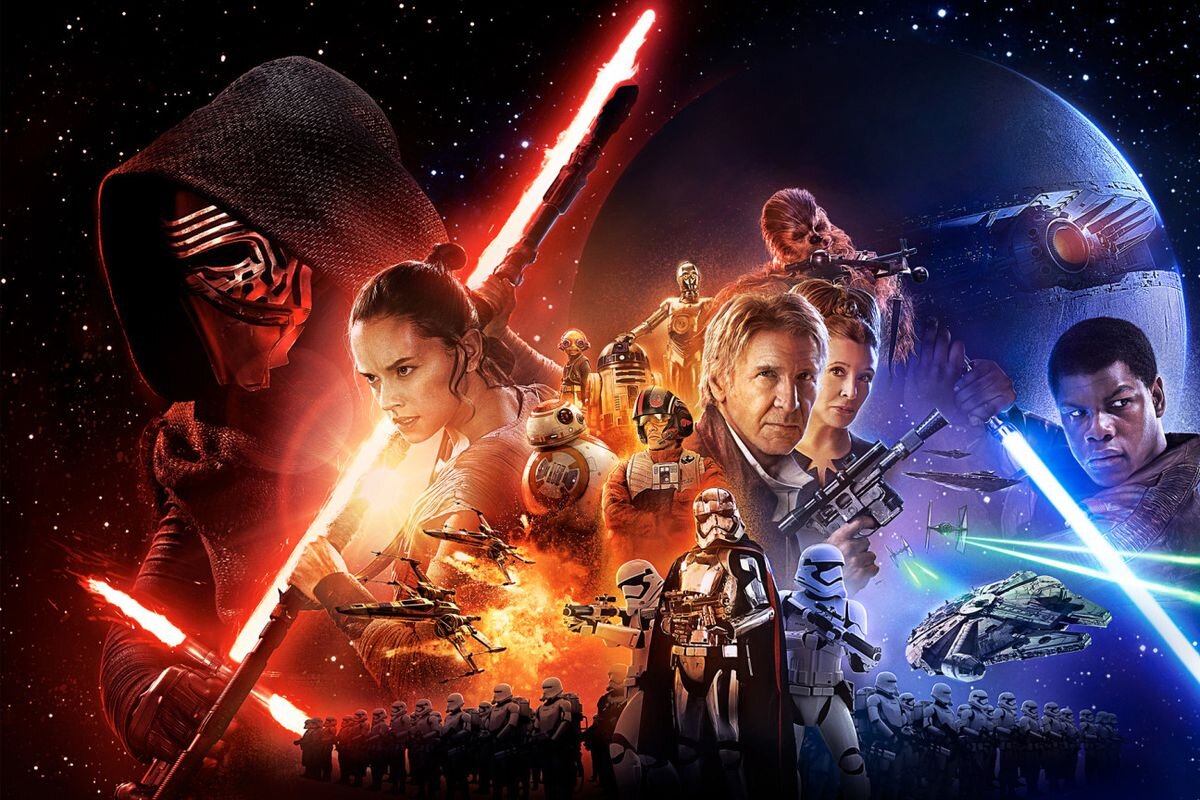Review: Star Wars
Watching a new Star Wars film is like attending a religious service; there is an element of ritual involved, be it the adoption of a dress code or the prohibition of spoilers. Indeed, the excitement that has built since the announcement that a seventh film was in production and the leads of the original trilogy would be reunited has made J.J. Abrams household name. While its title suggests a reawakening of the Star Wars franchises in fans old and new, The Force Awakens takes few creative risks in order to appeal to its enormous fan base.
The fanfare that plays during the opening crawl triumphantly announces John Williams’s return to the orchestral heritage of Slavic countries, from which his score to the original trilogy drew when others turned to synthesizers and Theremins. The world of Star Wars has a distinctive cinematic identity, with its own rules governing how languages sound, characters dress, and droids are designed. Any competent Star Wars film will uphold the standards set by the original ones, and all of them have been mostly successful. Abrams, known for paying homage to classic sci-fi filmmaking with Super 8 and his reboot of Star Trek, recreates the original Star Wars experience down to the wipe transitions and neon turquoise credits, adding a dash of his signature lens flares and blue glow. However, the unvarying atmosphere created by Abrams’ cool lighting leaves the visuals remarkably invective.
The art direction might impress attentive viewers with its detail and continuity. The Force Awakens, releasing 30 years after the original trilogy, is likewise set 30 years after the original trilogy’s events: the original cast members reprise their roles and technology in the Star Wars universe has advanced by a proportional amount, reflected in the dilapidated buildings and vehicles that populate the latest film.
However, this appeal is so strongly based on nostalgia and The Force Awakens fails to be iconic its own ways. Like its impressive marketing campaign, the film’s paper-thin plot serves merely to ornament a series of perfectly timed revelations with very few plot points to distinguish it from the previous movies: the first appearances of the Millennium Falcon, Han Solo, Princess Leia, and Luke Skywalker are deployed at equal intervals throughout the two-hour pageant, with just enough time between each of them to keep fans wondering what Star Wars icon will be unveiled next, and a pivotal scene near the end is lifted almost straight out of the paternal conflict at the center of The Empire Strikes Back – but this is hardly a story.
The original trilogy, a mash-up of samurai films, World War II serials, and Russian ballet, is appealing because of its diversity of influences. The prequels, as hackneyed as they are, had spectacular costumes and sets. If there is anything to love about the latest Star Wars film, it is for the same reasons one loves the previous films rather than any new reasons. If Abrams’ goal was to create a film enjoyable on its own merit, then The Force Awakens leaves much to be desired. If it was to resurrect a magic no longer seen in today’s filmmaking, then he has partially succeeded. If only for that, his latest effort is commendable.



